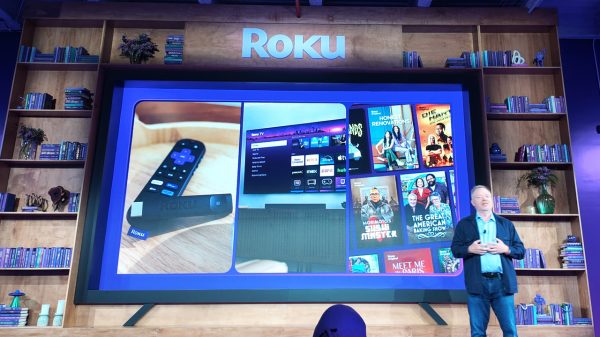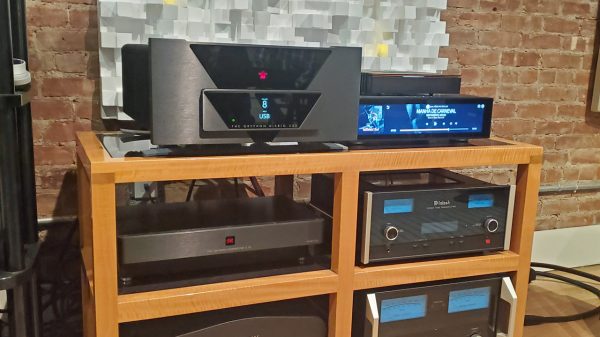Updated: May 22, 2024 with contributions by Chris Boylan
DTS, formerly “Digital Theater Systems,” is a division of Xperi which is responsible for audio product development, specifically audio codecs (encoder/decoders). Codecs are what allow digital sound to be used in physical media, movie theaters and streaming services at varying levels of efficiency and compression to deliver sound from music, movies and streamed video content to consumers.
DTS’ main competitor Dolby gets more love from marketing people and publicists and there is far greater brand awareness in the general moviegoing and audio/video hobbyist population. Since 1997, there has been a long-standing feud between fans of one format vs. the other which you can read more about here:
Dolby vs. DTS: Which One is Better?
DTS:X is the latest version of the DTS codec and differs from previous DTS codecs in one important way: height channels. Where monophonic sound comes from one speaker, stereo sound comes from two and surround sound comes from speakers all around you, immersive sound formats like DTS:X add a height element so sound comes from above you as well. This leads to a virtual dome of sound around the listener which creates a more immersive surround experience. When you start looking, DTS sound is available in many different flavors and can be experienced in almost every possible environment; home cinema, gaming, mobile, and more.
Let’s take a deeper look into the DTS:X format and how it has evolved over the years.
The Roots of DTS:X
DTS:X is an outgrowth of the MDA (Multi-Dimensional Audio) concept, which was originally developed by SRS Labs (which was absorbed by DTS, which, in turn, is now owned by Xperi).
Similar to Dolby Atmos, the original version of DTS:X, now known as DTS:X Profile 1, used sound objects, which are not tied to specific channels or speakers. Sound objects can be static or moving and are assigned during mixing to positions in three-dimensional space. These sound objects are rendered at playback time to map the sounds to the available speakers in any system.
The DTS:X foundation MDA codec is open-source, whereas the use of Dolby Atmos requires a license fee from Dolby. This means that content creators can use MDA as a tool for mixing audio that can be applied to various output formats. DTS:X is just one format that can be chosen. It it important to note, however, that equipment manufacturers (TVs, receivers, soundbars) do need to pay a license fee in order to decode content encoded in the DTS:X format.
Of course, more channels and speakers (especially vertically firing or overhead speakers) improve the accuracy of sound object placement, but unlike Dolby Atmos, the immersive qualities of DTS:X could and still can be enjoyed with a standard 5.1 or 7.1 channel speaker setup. Over time, Dolby Atmos has also added “virtualization” capabilities so it can simulate height channels without physical speakers dedicated to these height channels. But DTS:X provided this capability right out of the gate.
The reason for this is that DTS:X analyzes the capabilities, number, and placement of speakers in a given setup and will map the immersive audio effects as closely as possible given the setup. This means that whether you have a 2-channel or 7.1.4 channel speaker setup, DTS:X will try its best to deliver a convincing immersive surround sound experience with encoded content.
DTS suggests that a 7.1.4 channel speaker layout at home provides the best result for DTS:X, Profile 1. DTS:X Profile 2 (DTS:X for Streaming) is hard-coded to 5.1.4 channels but can be adapted to 5.1.2, 7.1.2 and 7.1.4 speaker implementations.
Tip: In a Dolby Atmos or DTS:X speaker setup, the first number refers to the number of speakers placed in the horizontal plane, the second number refers to the number of subwoofers, and the third number refers to the number of vertically firing or overhead mounted speakers. Read more about this here: What does 5.1.2 or 7.2.4 mean for home theater?

DTS:X in the Cinema
Although DTS got out of the movie theater business some time ago, its codec is still in use in some cinemas.The ability of DTS:X to adapt (map) to a variety of speaker setups, makes it an affordable option for movie theater owners who want to deliver a premium immersive experience to theater-goers.
For example, if a movie theater already has a system/speaker setup that is optimized for Dolby Atmos, Barco Auro 11.1 (pdf), or another format, DTS:X can easily remap the sound objects it has according to the requirements of those speaker layouts.
A growing number of cinemas worldwide include DTS:X as an option with compatible movie content. Check your local movie theater to see if it is offered.
DTS:X for Home Theater
DTS:X for home now comes in two distinctive versions: one optimized for physical media like Blu-ray Disc and Ultra HD Bluray (DTS:X Profile 1), the other optimized for streaming services (DTS:X Profile 2, also known as “DTS:X for Streaming”). DTS:X Profile 1 can be delivered in a lossless format (bit perfect to the studio mix) while DTS:X Profile 2 is only available in a lossy version. While there is a certain amount of cross-compatibility, the requirements of each system is a bit different.
To access DTS:X Profile 1 at home you need:
- Software titles encoded in DTS:X – these are typically Blu-ray Discs, UltraHD Blu-ray Discs and digital downloads from a service such as Kaleidescape.
- A Player capable of playing back DTS:X content – any old UHD Blu-ray Player will do (or a Kaleidescape player)
- A home theater receiver and speakers or a soundbar that is DTS:X compatible. If your home theater receiver or soundbar is not DTS:X compatible but is DTS Digital Surround or DTS-HD Master Audio compatible, you can still play DTS:X encoded content, you just won’t be able to access its added features or height information.
To access DTS:X Profile 2 at home, you need:
- Subscription to a streaming service that offers content which is encoded in DTS:X for Streaming. As of May 2024, this would be Disney+, Sony Pictures Core, or the regional “Rakuten” platform which is available in certain parts of Europe.
- A streaming device like a TV or streaming stick that includes DTS:X Profile 2 decoding
- A receiver and speakers or sound bar that support DTS:X decoding
DTS:X Promotional Videos:
DTS:X Pro

DTS:X Pro extends the capabilities of DTS:X so that it can support up to 32 connected speakers, including height speakers.
Currently, the only product available for consumers that includes DTS:X Pro capabilities is the Trinnov Altitude 32 Preamp/Processor ($20,000+) and Storm Audio MK2 Processors ($15,000+). But for the average consumer or DIY home theater fan, there are plenty of inexpensive receiver and soundbar offerings in the $500 to $2000 range which support DTS:X decoding.

DTS:X Dialogue Level Control
In addition to its immersive surround sound capabilities, DTS:X also provides dialog-level control. DTS:X sound engineers have the ability to control the volume level of each sound object which can mean up to several hundred level adjustments before the content is provided to the home listener.
However, due to differences between each home setup, DTS:X can also provide some of this capability in form of dialog control that does not affect the sound balance of other elements of the content you are listening to.
Check your home theater receiver or soundbar user guide for this setting option.
DTS Neural:X

Home theater receivers that incorporate DTS:X also include a companion format called DTS Neural:X. This feature provides an option for users to listen to any non-DTS:X encoded content such as Blu-rays, DVDs, CDs or streaming media in an immersive manner. It approximates the height and wide sound field information of DTS:X, just not as precisely as true encoded DTS:X content. DTS Neural:X can up-mix 2, 5.1, and 7.1 channel sources.
DTS Virtual:X

DTS Virtual:X is built on the same principles as DTS:X, which is to provide an immersive listening experience that includes overhead sound effects. However, where it is different from DTS:X (and DTS Neural:X) in that it provides an immersive listening experience without extra speakers. DTS Virtual:X works with both DTS:X and non-DTS:X encoded content.
Using proprietary algorithms Virtual:X analyzes audio signals in real-time and approximates where rear and height sound objects should be directed in a 3D listening space. For example, you can add virtual surround and height to a system that only has two speakers, or add virtual height channels to a standard 5.1 or 7.1 channel speaker system.
The DTS Virtual:X psychoacoustic processing tricks your ears into perceiving the presence of additional “virtual” speakers and does not require wall or ceiling reflections to work.
DTS Virtual:X can be included in TVs, soundbars, and home theater receivers at the discretion of the manufacturer. When shopping for a TV, soundbar, or home theater receiver, check to see if it offers DTS Virtual:X processing. In our experience virtual surround is not as effective at generating an immersive experience as discrete immersive surround with in-ceiling or reflective height speakers, but for irregular room environments or if budget constraints are tight, virtual surround is certainly more effective than no surround at all.
Using DTS Virtual:X is easy.
- On soundbars and TVs, it’s an on/off selection.
- For home theater receivers, designate that you are not using physical surround back or height speakers, then DTS Virtual:X can be activated to simulate sound from these missing speakers.
DTS Virtual:X Promotional Videos
DTS:X and IMAX Enhanced
DTS:X is an integral part of the IMAX Enhanced format that brings the IMAX visual aspect ratio, video, and audio processing to home theater setups. The goal is to bring an IMAX theatrical experience to the home environment without spending $400,000 or more to set up your own IMAX Private Theater.
For audio support, IMAX has selected DTS:X as the IMAX Enhanced audio format. For physical media, IMAX uses the standard DTS:X profile 1. For streaming media, IMAX Enhanced content uses DTS:X Profile 2 (“DTS:X for Streaming”) as the delivery codec. In both cases, the DTS:X mix is sourced from the original 12-channel IMAX theatrical soundtrack with its high dynamic range and rich, extended bass response.
When IMAX Mode is activated on a compatible TV, receiver or soundbar, the DTS:X codec adapts IMAX audio requirements to your specific speaker configuration.
The DTS:X IMAX Enhanced Mode is compatible with 5.1, 7.1, or more channel setups. However, IMAX recommends a 5.1.4 or 7.2.4 channel set up for an optimum listening experience. This means that if you already have a Dolby Atmos speaker setup, DTS:X will map the IMAX audio soundtrack to those speakers. For DTS:X profile 2 (“DTS:X for Streaming”) the mix is locked in at 5.1.4 channels. On a 7.1.4 channel speaker configuration, the side surround speakers are disabled. On a 5.1.2 or 7.1.2 channel speaker configuration, the mix is mapped and optimized to best use all available speakers.
As of May 2024, there are several TVs (Sony, TCL, Hisense, Vizio, Sharp, Xiaomi and Philips) which are IMAX Enhanced certified, and many of these also include DTS:X Profile 2 decoding. There are also a few video projectors (mostly Sony), and several AVRs and soundbars that include IMAX Enhanced certification and DTS:X decoding.
IMAX Enhanced content is available on select UHD Blu-ray Discs as well as select streaming content from services such as Disney+ and Sony Pictures Core.
The Sony Pictures Core (formerly “Bravia Core”) streaming service is exclusive to Sony and only available on select Sony BRAVIA TVs and the PS5 gaming console. As of May, 2024, it can’t be accessed through other streaming devices.
Note: Streaming content may include IMAX Enhanced features on the visual side, with its variable aspect ratios, but IMAX Enhanced DTS:X audio is available on a more limited sub-set of devices. To find out more about IMAX Enhanced content with DTS:X surround sound, check out this article:
DTS:X Sound Comes to Disney+ with IMAX Enhanced – This is How You Do It
DTS Headphone:X

Another variation of DTS:X, known as DTS Headphone:X is optimized for PCs, mobile devices, and game consoles for immersive playback on headphones. DTS Headphone:X doesn’t require special headphones, as the audio processing is incorporated into the playback device. With DTS Headphone:X, psychoacoustics processing and HRTF (head response transfer function) are used to simulate immersive three dimensional surround sound from a standard pair of headphones.
Of course, good quality earphones and headphones and also headphones labeled as DTS Headphone:X compatible will provide better results. Similar to DTS Virtual:X, Headphone:X works with both encoded and non-encoded content.

TVs, AVRs & Soundbars with DTS:X
There are a growing number of TVs, home theater projectors, A/V receivers and soundbars that support DTS:X in 2024. However, there are no streaming sticks or set-top boxes that support DTS:X at this time.
Tip: Disney+ is the first major streaming service to support IMAX Enhanced with DTS:X for Streaming (Profile 2), but it will only work on TVs that support DTS:X.
TVs with DTS:X
- Sony BRAVIA 3 – from $499 at Sony | Amazon
- Sony BRAVIA 7 – from $1,699 at Sony | Amazon
- Sony BRAVIA 8 – from $1,999 at Sony | Amazon
- Sony BRAVIA 9 – from $3,299 at Sony
- Sony A80L – from $1,699 at Amazon
- Sony A95L – from $2,799 at Amazon
- TCL QM7 – from $799 at Amazon
- TCL QM8 – from $1,499 at Amazon
- TCL QM89 – from $19,999 at Best Buy
- Hisense U7 – from $599 at Amazon
- Hisense U8 – from $799 at Amazon
Projectors with DTS:X
- Sony VPL-XW5000ES – $5,998 at Amazon
- Sony VPL-XW6000ES – $11,998 at Amazon
- Sony VPL-XW7000ES – $27,998 at Amazon
- Sony VPL-GTZ380 – $80,000
- Sony VPL-VW5000ES – $60,000
A/V Receivers with DTS:X
- ARCAM AVR5 – $2,000 at Crutchfield
- Denon AVR-A1H (DTS:X Pro) – $6,499 at Amazon
- Denon AVR-X4800H – $2,499 at Amazon
- Denon AVR-X3800H – $1,699 at Amazon
- Denon AVR-X2800H – $1,199 at Amazon
- Denon AVR-S970H – $899 at Amazon
- Denon AVR-S760H – $699 at Amazon
- Marantz Cinema 30 (DTS:X Pro) – $4,500 at Amazon
- Marantz Cinema 40 – $3,500 at Amazon
- Marantz Cinema 50 – $2,500 at Amazon
- Onkyo TX-RZ50 – $1,599 at Crutchfield
- Yamaha RX-V6A – $749 at Amazon
Soundbars with DTS:X
- Denon 550 – $649 at Amazon
- LG S80QR – $1,049 at Amazon
- LG S95QR – $1,799 at Amazon
- Sony HT-A5000 – $999 at Amazon
- Sony HT-A7000 – $1,399 at Amazon
- Sony BRAVIA Theatre Quad – $2,499 at Amazon | Crutchfield
- Sony BRAVIA Theater Bar 9 – $1,399 at Sony
- Sony BRAVIA Theater Bar 8 – $999 at Sony | Amazon
- Vizio Elevate M512E-K6 – $799 at Amazon
- Vizio M51ax-J6 – $329 at Amazon
Related reading:











































